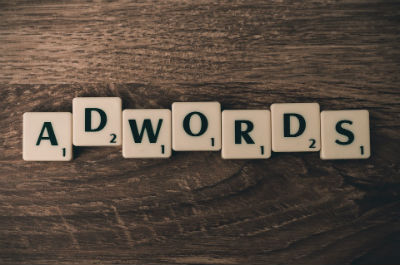You set up a Google AdWords account. You create mind-blowing copy. You roll out your campaign and wait for the sales to roll in. And you wait. And you wait. And you wait. Did you just burn money? Are all PPC campaigns as unpredictable as video poker?
We need to drive leads, and we need to close sales. More often than not Google AdWords is the first place we turn to fill our pipeline. And for good reason. AdWords can work wonders for your bottom line, if you know how to leverage its power. Just as with poker, there are rules and strategies you can use to consistently rake in the winnings, so it’s less like gambling and more like a strategic, growth-promoting source of revenue.
With that in mind, here are 12 PPC marketing hacks that can help you launch a successful AdWords Campaign.
12 PPC Marketing Hacks for a Successful AdWords Campaign
#1 Improve Your Quality Score 
One of the surest ways to boost your ROI is to improve your quality score. What’s the quality score, you ask? Basically, Google wants users to have a great experience. In order to do that, they’ve created a 1-10 scale that grades your ad based on how much value it gives to users.
Why does the quality score matter? Put simply, a higher quality score lowers your cost-per-click. If you want your investment to go a long way, you need to get that score as high as possible.
#2 Choose the Right Keywords
Keyword relevance is one factor that determines your quality score, so choose wisely. First, ask yourself a few questions: What’s the goal of your ad campaign? Are you trying to expand brand awareness or boost conversions? Set an objective, then choose the keywords that are most successful at achieving that specific goal.
#3 Prune Your Keywords
It may seem like a good idea to pepper your ad with every keyword you’ve ever collected, but that’s not the road to PPC marketing success. A good rule of thumb is to stick to one keyword per group. That way, Google knows that each ad is highly relevant for the chosen keyword. Start by creating a list of your top-performing keywords. Now create a separate ad group for each one.
#4 Include the Keyword(s)
This one is simple. Make sure you actually use your chosen keyword in the ad copy. For best results, sprinkle the keyword throughout the ad text. Put it in the H1 (title) tag, the URL, the description, etc.
Also, be sure to include it somewhere in your landing page. When Google sees the same keyword in both the ad text and the landing page, it understands that keyword relevancy is high. All of this helps improve your ad’s quality score.
#5 Perform Keyword Diagnosis
Some businesses create a PPC campaign and then let it run on autopilot. If you’re not checking the status of your campaign on a regular basis, you’re not getting the full benefit of Google AdWords.
In addition to inspecting your overall analytics, you should also use Google’s “keyword diagnosis” tool to see if your keywords are performing as you expect. Are people searching for these keywords in a high enough volume to make them worth your time? If they’re not, you can adapt your strategy accordingly or even pause the campaign while you rethink your approach.
#6 Use Broad Match at Your Own Risk
Let’s say you want to promote your most popular dresses. You might launch an ad campaign based on the keyword “printed silk dresses.” If you use the standard broad match function, your ad will appear next to results that include any of those words anywhere in the search term, including:
- Printed t-shirts
- Silk scarves
- Cheap dresses
None of those searches is likely to result in high numbers of click-throughs or conversions. Why would someone looking for t-shirts or shoes click on a dress ad? Unless you have a clear strategy in mind, be careful of wasting your money on broad match.
#7 Try Modified Broad Matches Instead 
When it comes to pairing search terms with keywords, you have three other options. The first is a modified broad match (+printed + silk + dresses), which will ensure that the search terms contain all of the words in your phrase, such as:
- silk dress with printed floral pattern
- dresses made of printed silk
Phrase match (“printed silk dresses”) and exact match ([printed silk dresses]) give you greater specificity, but they also weed out a lot of relevant search terms. Overall, modified broad matches work well for most campaigns.
#8 Use Negative Keywords
It’s common to ignore negative keywords. It’s also a mistake. With negative keywords, you can exclude search terms that don’t relate to your ad campaign.
Using the “printed silk dresses” example, you could eliminate common search terms like “printed t-shirts” and “silk scarves” to narrow down the audience that sees your ad. At the end of the day, knowing what keywords to target is important. Knowing what not to target can be just as crucial.
Here’s another quick tip: look at the “queries” tab to see what searches have been triggering your ads. Note any searches that don’t apply to your product. Add these search terms to your negative keywords.
#9 Optimize Your Landing Page
In addition to optimizing for your chosen keyword, you should also optimize for:
- Mobile Devices: Since more people use smartphones to access the internet than desktops, Google now prefers a mobile first web experience. Make sure your site is optimized for mobile and has a responsive design. Google will thank you for it.
- Load Speed: Slow load speed leads to bounces. A high bounce rates leads to a poor quality score. That can lead to higher costs.
- Quality: The quality of your content also makes a difference. On the whole, informative content performs better than spammy, hard-sell content, which tends to increase the bounce rate.
#10 Create Compelling Copy 
The click-through rate is by far the single most important factor in determining your quality score. There are many ways to write ads that catch the eye and boost engagement, but a few strategies have worked time and time again.
With just a few words you can:
- Offer timely discounts (e.g. Get $10 off a Thanksgiving turkey)
- Tell a story (e.g. Find out how this couple saved $1,000 on their energy bills)
- Establish trust (e.g. Get a free trial. Cancel anytime.)
- Ask questions (e.g. Do you need a better night’s sleep?)
No matter what approach you take, be sure to include a strong Call to Action. If you want someone to do something, don’t beat around the bush. Tell them directly, as each example above does.
#11 Boost Conversions by Remarketing
How many people buy a product on their first visit to a site? Not many. Most people will visit a landing page once and then take some time to digest what they saw.
But what if they forget? If you remind them, they won’t. You can do that by using a technique known as remarketing. Essentially, you’re showing previous visitors the same ad a couple more times. This strategy works so well because people who have already shown interest in your site are more likely to come back and make a purchase.
#12 Rotate Ads 
Do you have multiple ads in a single campaign? Google AdWords won’t let you display every ad at the same time in a single search. Instead, it will rotate them. The good news is, you can control the rotation settings.
When you choose “Optimize,” you are giving the power to AdWords to automatically rotate your ads, and it will choose the best performing ads. If you decide to ‘Rotate Ads indefinitely”,’ Adwords will rotate them evenly, letting you more accurately A/B test your ads and giving you the final say on which ads to show when.
Need help mastering the ins and outs of PPC marketing? Consider getting some professional help from a digital growth agency.
